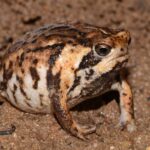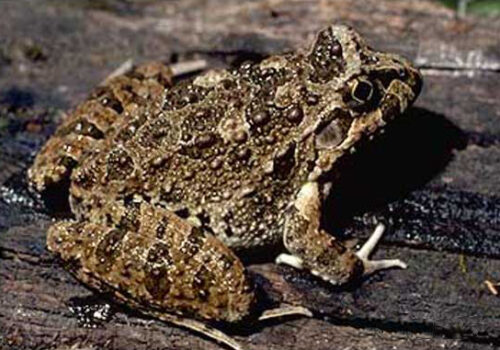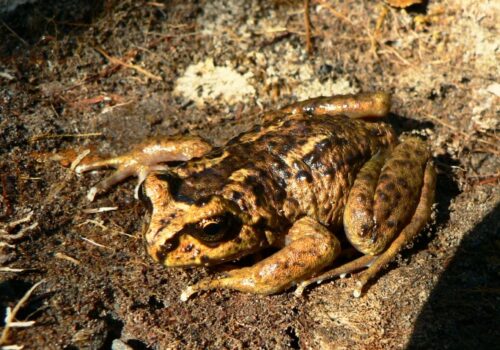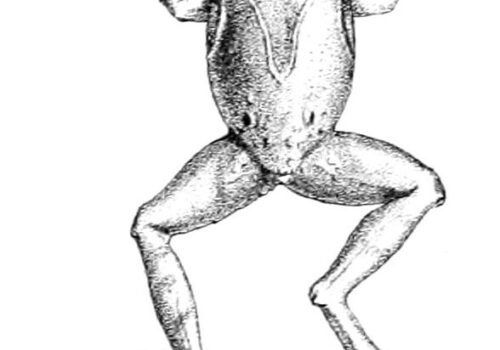<<Allophryne ruthveni=”/?p=4829″>Allophryne resplendens=”/?p=4828″>Allophryne relicta: Chile’s Hidden Treasure of the Forests#
In the shadowy, moisture-laden undergrowth of Chile’s temperate forests, a small and elusive amphibian thrives quietly, largely unseen by human eyes. The Cantillana Spiny-chest Frog, scientifically known as Alsodes cantillanensis, is a remarkable and somewhat mysterious inhabitant of South America’s delicate ecosystems.
Discovered only in recent decades, this fascinating amphibian bears not only the elegant grace typical of frogs but also a unique resilience splendidly adapted to its specific environment. As an emblem of biodiversity and ecological health, its existence whispers subtle yet profound truths about the health of our planet.
Taxonomy and Classification#
The Cantillana Spiny-chest Frog belongs within the genus Alsodes, inside the family Alsodidae, an amphibian lineage entirely endemic to southern South America, predominantly within Chilean confines. This family of frogs is known for their subtle yet profound adaptations to mountainous and forested environments, and the Alsodidae frogs often exhibit cryptic colorations and unique skin characteristics that provide camouflage within their surroundings.
Scientifically recognized as a species relatively recently, Alsodes cantillanensis was described formally by José Núñez and Carlos Garín in 2001. Its close relatives, including its congeners Alsodes montanus and Alsodes australis, share similar mountainous habitats but distinctly differ in their morphological and ecological adaptations, each exquisitely tailored to their particular environs.
Natural Habitat#
The Alsodes cantillanensis resides primarily within the central region of Chile, nestled deep within moist, temperate forests and foothills, particularly in the Cantillana Mountain Range. Contrary to widespread belief that frogs only inhabit tropical rainforests, Alsodes cantillanensis represents a beautiful paradox; it thrives within the lush, leafy understory of temperate forests, ecosystems richly saturated with moisture, moss, and delicate arrays of ferns.
These environments provide not only essential moisture but also a rich supply of invertebrate prey and a myriad of hiding places for this elusive species. Gentle mountain streams, trickling beneath shaded canopies, offer ideal breeding habitats. The crystalline waters flowing down cobblestone paths and through moss-covered rocks are crucial to sustaining the early, aquatic stages of its life cycle.
It is here, in this quiet sanctum of fallen leaves, rich soil, and running water, that the Alsodes cantillanensis thrives—away from public curiosity, unassuming, and distinctly secretive.
Physical Characteristics#
A first glance at the Cantillana spiny-chest Frog reveals an amphibian beautifully adapted to camouflage. Typically small in size, averaging around 4 to 5 centimeters in adult length, it sports muted, earthy colors—shades of olive, deep browns, mottled with subtle hues of ochre and green.
But its most distinctive trait—and the attribute that gave the species its intriguing common name—is the presence of unusual textured projections, or spinules, that cover the males’ chests during the breeding season. These sharp, spine-like structures are believed to play a role in mating, as males use them for gripping females during amplexus, enhancing breeding success within flowing water conditions.
The frog’s coloration and skin texture blend marvelously with moss-coated rocks and leaf litter, providing vital protection. Its slender yet muscular limbs enable precise climbing and leaping capabilities, valuable when navigating rocky stream beds or escaping predation. This intricate adaptation makes the differentiation of these animals from their habitats challenging even to experienced naturalists.
Behavior and Life Cycle#
Secretive Feeders in the Understory#
Alsodes cantillanensis exemplifies the silent, voracious hunter typical of many amphibians. Its typical diet consists predominantly of small insects, spiders, and other tiny invertebrates lurking within leaf litter and beneath rocks. With a finely honed ability to patiently observe, track, and suddenly pounce on prey, this small amphibian contributes significantly to regulating insect populations, playing an undeniable role in ecological balance.
Breeding and Parental Behaviors#
When the damp beauty of Chile’s forests begins to resonate loudly with the sound of flowing streams in spring, breeding season emerges. Male frogs, driven by instinctual urgency, begin their calls beside gently running waters. Their quiet, melodious croaks—remarkably subtle compared to other frog species—resonate softly beneath moss-covered canopies.
Unique among amphibians, male Cantillana frogs exhibit parental care by guarding their offspring. Following mating, eggs are laid in sensitive patches under submerged rocks or in protected stream pools, providing concealment from predators and harsh environmental conditions. The resulting tadpoles, small and darkly pigmented, remain in freshwater streams, thriving diligently as they undergo the magical process of metamorphosis from larvae with tail and gills to juveniles breathing air and walking on land.
Nocturnal and generally elusive, the species’ unique behaviors are not widely documented. Observations in the wild remain rare and treasured by researchers, with each sighting considered a contribution to our collective understanding of amphibian life histories.
Ecological Role#
The ecological influence of Alsodes cantillanensis cannot be overstated. Like countless amphibians globally, it acts both as predator and prey, linking successive trophic levels into a finely balanced food web. As predator, it helps control insect and arthropod populations, indirectly influencing plant health and forest stability. But equally important is its role as prey, nourishing multiple predators such as birds, snakes, and small mammals.
Amphibians are also considered critical indicators of ecosystem change and health. Their permeable skin and sensitivity to subtle environmental shifts make them a vital barometer of ecosystem health. Understanding habitats hosting Alsodes cantillanensis populations thus provides conservationists with invaluable ecological information.
Threats and Conservation Status#
The ongoing threat to this beautiful species of amphibian remains a pressing issue. Habitat loss through continued logging, urban expansion, and agricultural encroachment has directly impacted these frogs. Degradation of freshwater systems due to pollution and climate change further exacerbates their vulnerability. Although specific population sizes aren’t entirely clear, experts have noted alarming declines—a troubling sign mirrored globally across amphibious communities.
Currently, the International Union for Conservation of Nature (IUCN) has listed Alsodes cantillanensis as “Endangered,” underscoring an immediate conservation concern. Particularly worrying is that this frog’s distribution seems limited entirely to the isolated region surrounding the Cantillana mountains, making it acutely vulnerable to localized ecological disturbances.
Thankfully, conservation projects have been initiated, including habitat preservation efforts in Chile, habitat restoration, and public awareness initiatives. Programs aimed at community education about amphibian diversity and ecological services help cultivate guardianship among locals, involving people closely with conservation goals and amphibian protection.
Cultural and Scientific Significance#
Although elusive and relatively unknown to mainstream culture, Alsodes cantillanensis carries substantial scientific value. Researchers study their role as environmental indicators, learning from their behaviors and ecological needs how best to conserve similarly fragile faunas elsewhere.
This small frog stands powerful as a symbol of fragile mountain ecosystems threatened globally by human impact. Its quiet existence deep within these ancient forests compels conservationists toward broader environmental protection movements—reaffirming our interconnectedness to Earth’s increasingly fragile biodiversity heritage.
Conclusion: Protecting Our Amphibian Ambassadors#
Alsodes cantillanensis, Chile’s shy and secretive Cantillana Spiny-chest Frog, embodies the wondrous adaptations and delicate ecological roles characteristic of amphibians worldwide. Reflecting broader amphibian conservation crises, this extraordinary frog reminds us of our shared responsibility to protect every hidden corner of our natural world.
By spreading awareness, supporting conservation, and cherishing biodiversity, each of us can ensure these living, breathing jewels remain an enduring feature of our shared planet. Consider exploring related articles like our profile of the Patagonian Amphibian Diversity, efforts in Temperate Forest Conservation, and further details about Indicator Species and Ecological Health.
Let this gentle reminder resonate: the survival of Alsodes cantillanensis is entwined deeply with our own ecological integrity and future.










